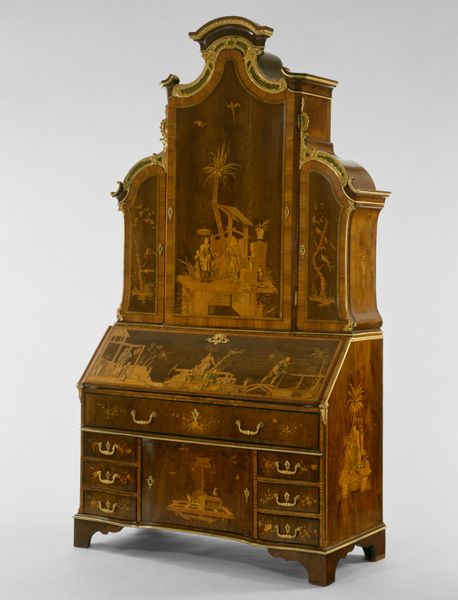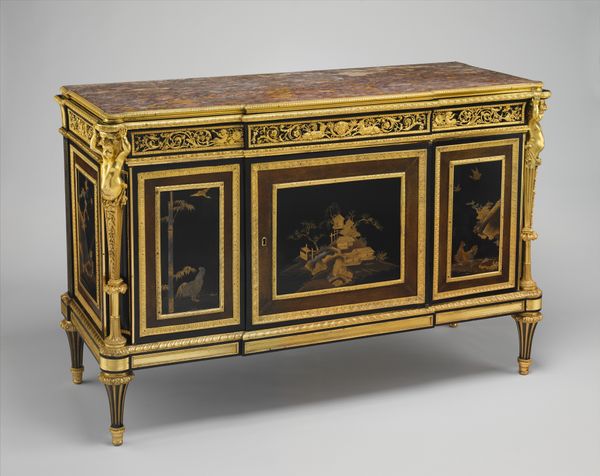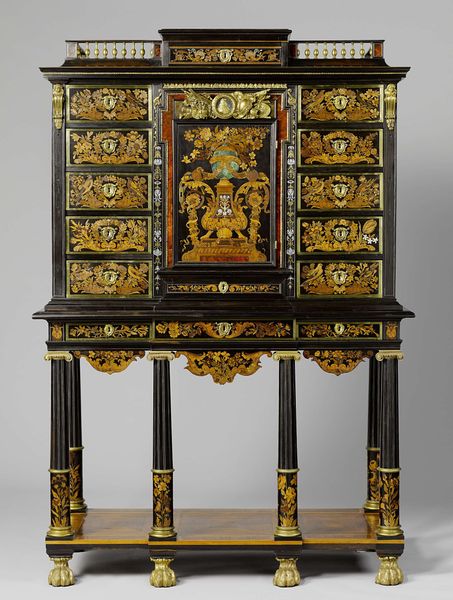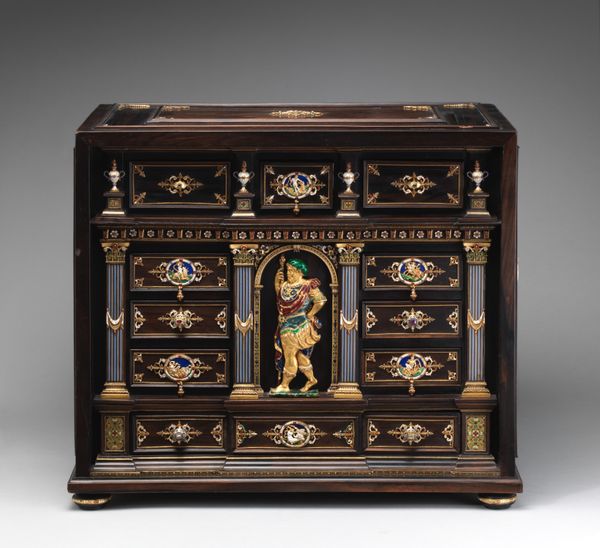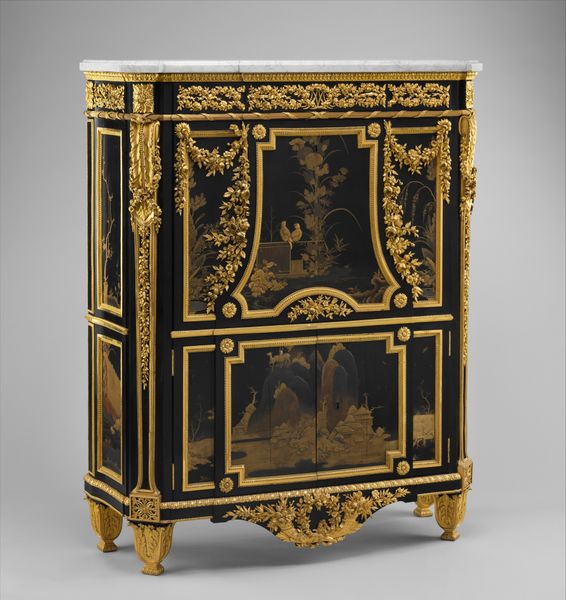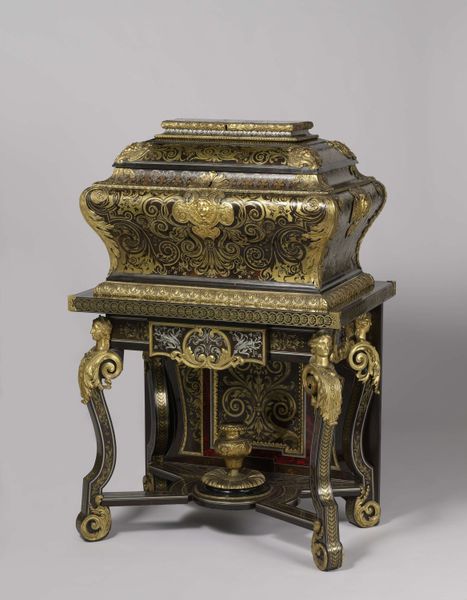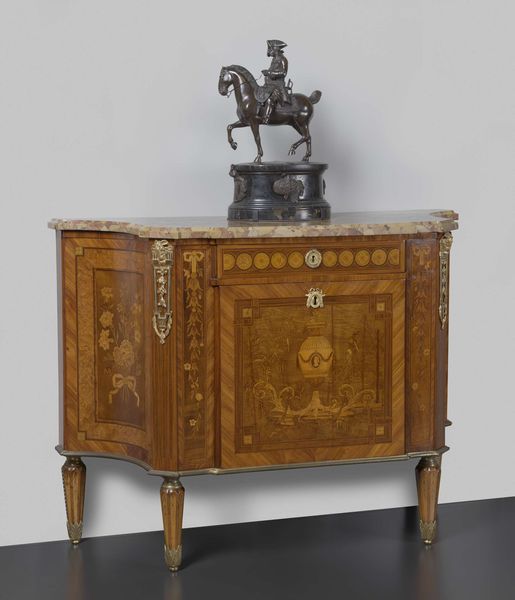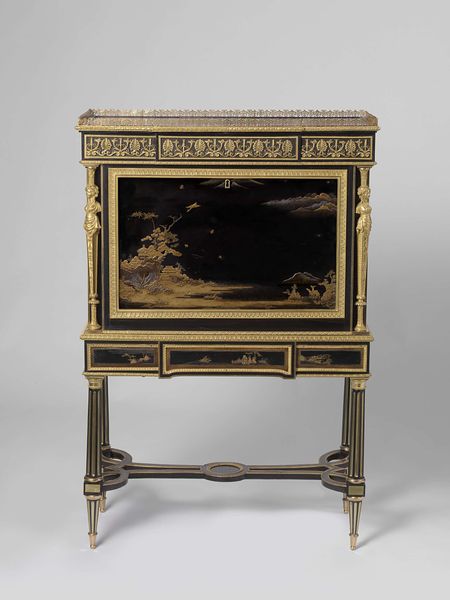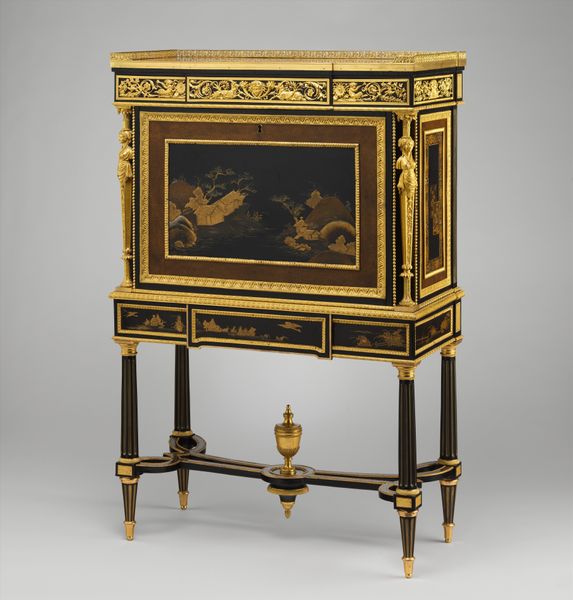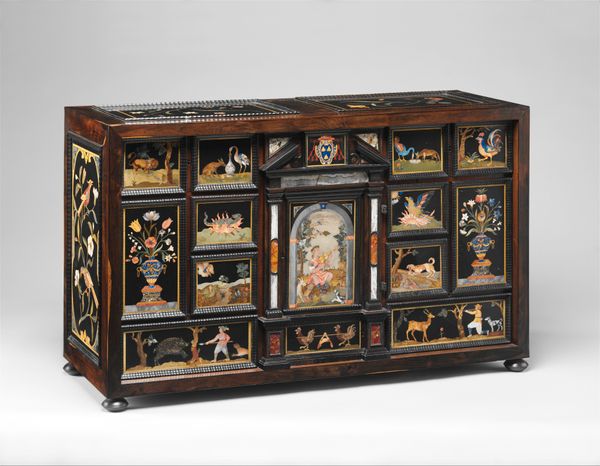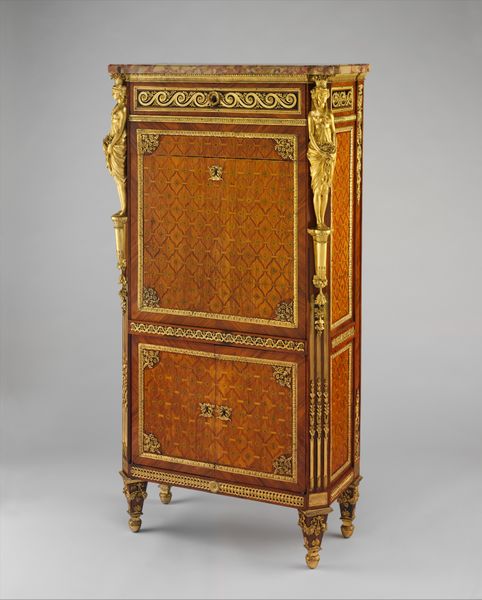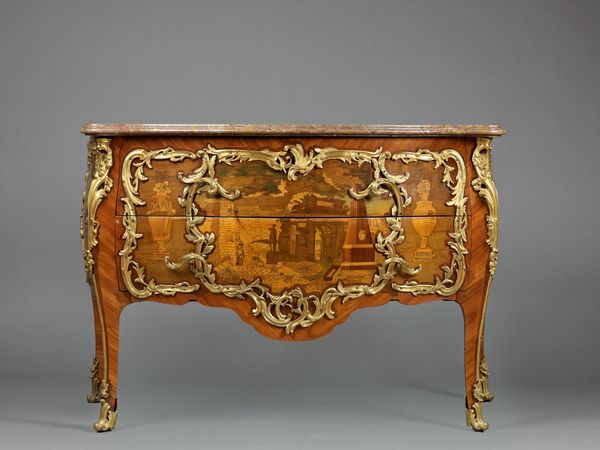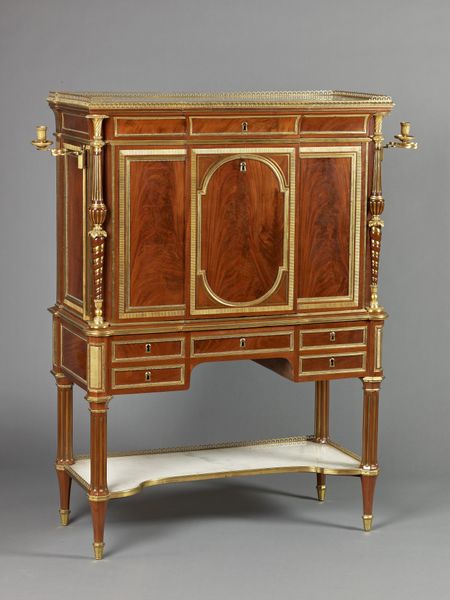
Dimensions: height 136 cm, width 120.6 cm, depth 45.8 cm, width 113.5 cm, depth 42 cm
Copyright: Rijks Museum: Open Domain
Curator: Good morning. Before us stands "Cabinet" by Charles-Guillaume Diehl, crafted circa 1867 to 1880. The piece showcases Diehl's virtuosity with wood and metal. Editor: It's…imposing. A stern, almost monumental object. The geometric precision juxtaposed with the decorative metalwork strikes a formal chord. Curator: Absolutely. The Arts and Crafts influence is evident in the marriage of function and elaborate design. Notice the carefully chosen wood grain, its warm palette lending depth. Diehl wasn't just building furniture, but composing an experience. Editor: Indeed. I find myself drawn to the figure at the top—almost a caryatid, but truncated. Her stoic expression casts a long shadow over the domestic scene depicted in the marquetry below. It is an intriguing symbolic contrast between grandeur and everyday life. Curator: I agree. The image inlaid in the wood, while suggestive of domestic tranquility, is framed by the rigid geometry, thus subtly reinforcing the status and power associated with luxury objects. Editor: Speaking of which, I see laurel wreaths, coin-like details hanging as ornamental features, and other Greco-Roman visual references. What narrative are these classical symbols meant to evoke for its intended audience? What does it mean to them? Curator: Diehl masterfully interweaves traditional symbolic language with industrial techniques to position the bourgeoisie within a grand historical narrative—linking personal wealth with inherited cultural significance. It reflects both a longing for permanence and an embrace of modernity. Editor: It is this tension between history and present which is captivating. The Cabinet acts as more than furniture: it encapsulates a fleeting moment in culture. Curator: Precisely. We have seen how the piece uses both decorative embellishments and classical themes to elevate mere storage into an enduring assertion of prestige. Editor: Yes, and the symbolism—from the stoic figurehead to the promise of peaceful domesticity depicted through intricate woodcraft—still speaks volumes about that time.
Comments
rijksmuseum over 2 years ago
⋮
At the 1867 Exposition Universelle in Paris the cabinetmaker Charles Diehl caused a great stir with a jewellery cabinet in a Greek Revival style. This is a somewhat plainer version of that cabinet. All the motifs of the inlaid work on the door refer to Greek antiquity, as do the silvered bronze fittings, which imitate Classical figures and coins.
Join the conversation
Join millions of artists and users on Artera today and experience the ultimate creative platform.
